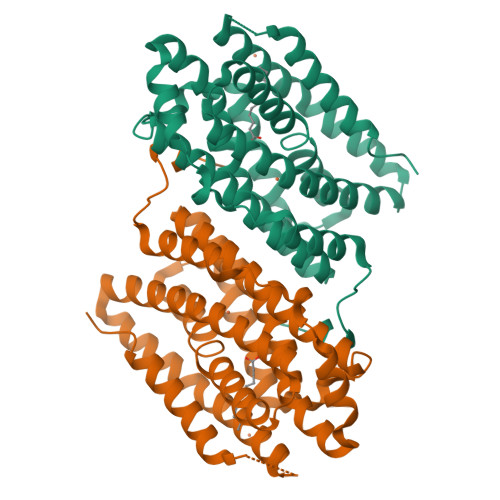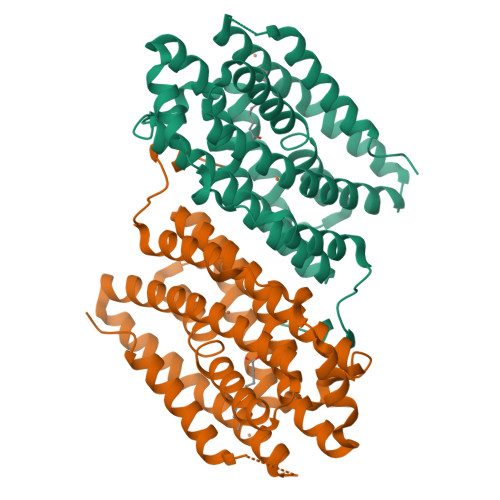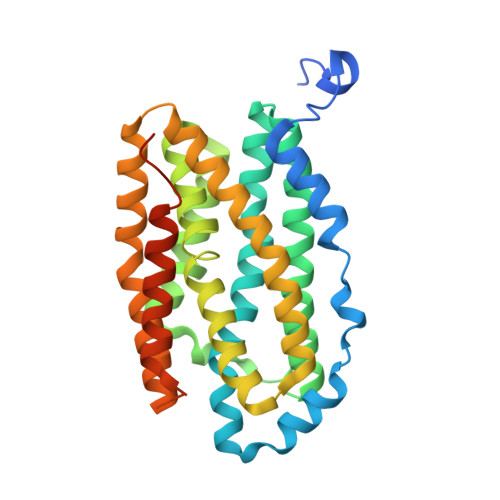Ether cross-link formation in the R2-like ligand-binding oxidase.
Griese, J.J., Branca, R.M.M., Srinivas, V., Hogbom, M.(2018) J Biol Inorg Chem 23: 879-886
- PubMed: 29946980
- DOI: https://doi.org/10.1007/s00775-018-1583-3
- Primary Citation of Related Structures:
6F6C, 6F6E, 6F6F, 6F6G, 6F6H, 6F6K - PubMed Abstract:
R2-like ligand-binding oxidases contain a dinuclear metal cofactor which can consist either of two iron ions or one manganese and one iron ion, but the heterodinuclear Mn/Fe cofactor is the preferred assembly in the presence of Mn II and Fe II in vitro. We have previously shown that both types of cofactor are capable of catalyzing formation of a tyrosine-valine ether cross-link in the protein scaffold. Here we demonstrate that Mn/Fe centers catalyze cross-link formation more efficiently than Fe/Fe centers, indicating that the heterodinuclear cofactor is the biologically relevant one. We further explore the chemical potential of the Mn/Fe cofactor by introducing mutations at the cross-linking valine residue. We find that cross-link formation is possible also to the tertiary beta-carbon in an isoleucine, but not to the secondary beta-carbon or tertiary gamma-carbon in a leucine, nor to the primary beta-carbon of an alanine. These results illustrate that the reactivity of the cofactor is highly specific and directed.
Organizational Affiliation:
Department of Biochemistry and Biophysics, Stockholm University, 106 91, Stockholm, Sweden. julia.griese@icm.uu.se.



















